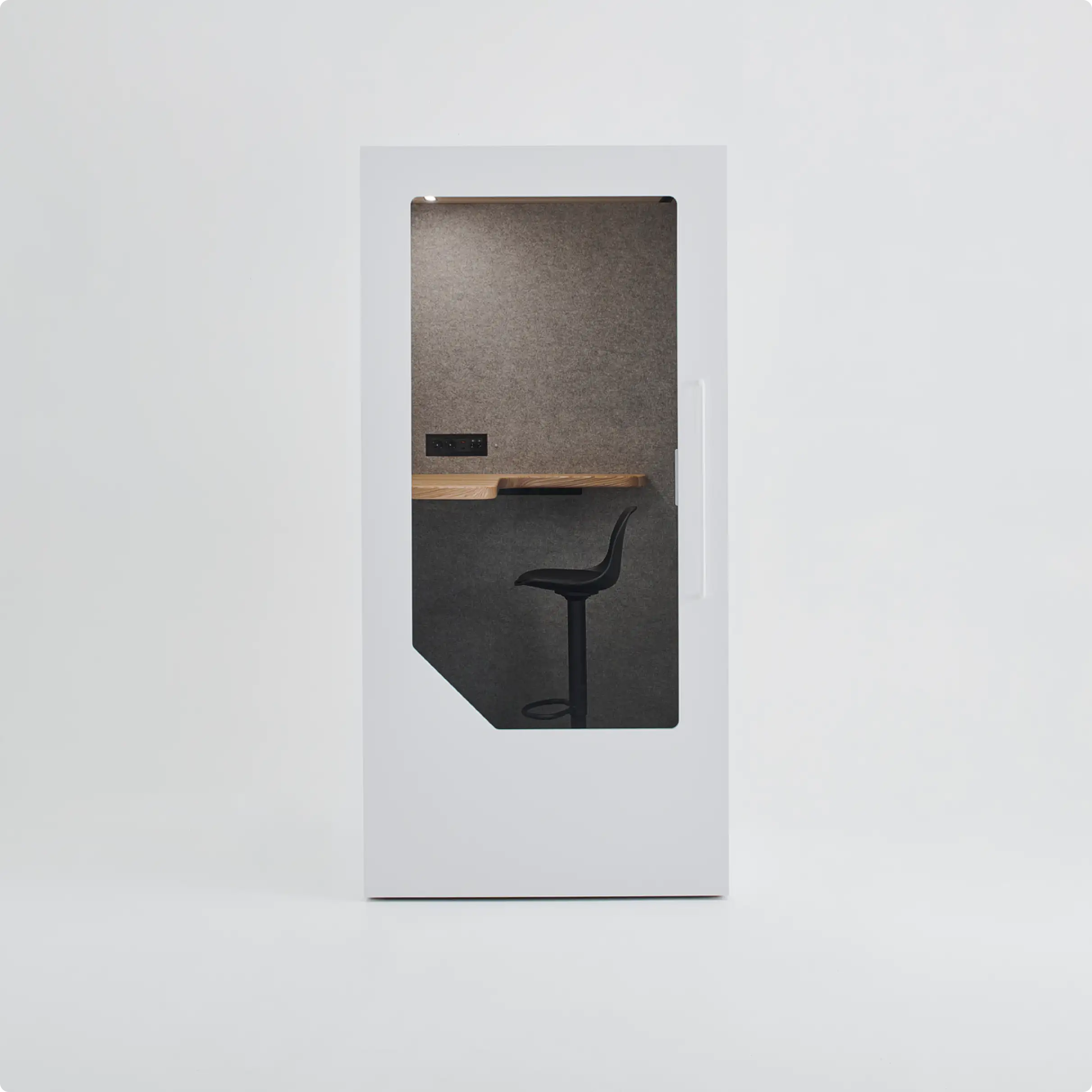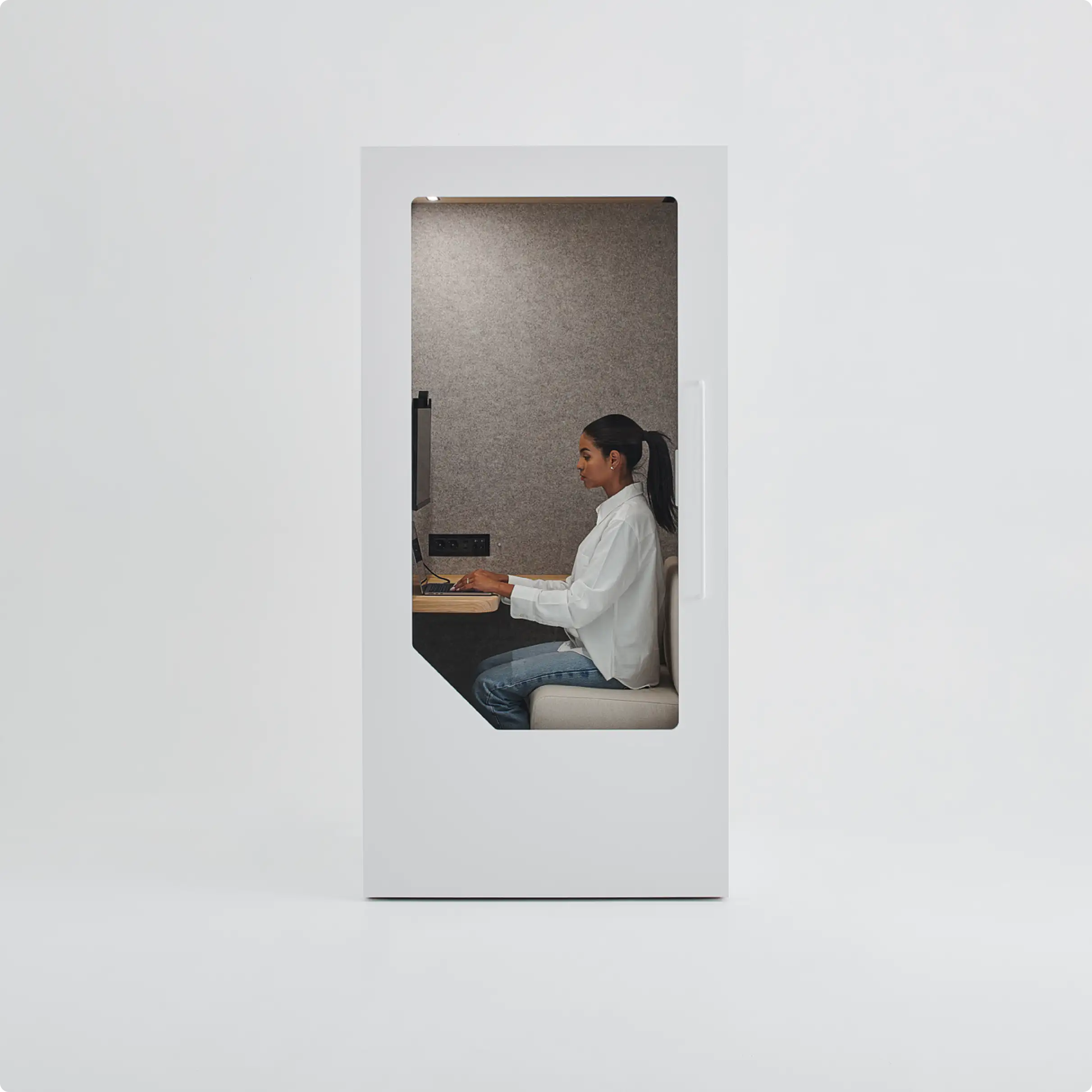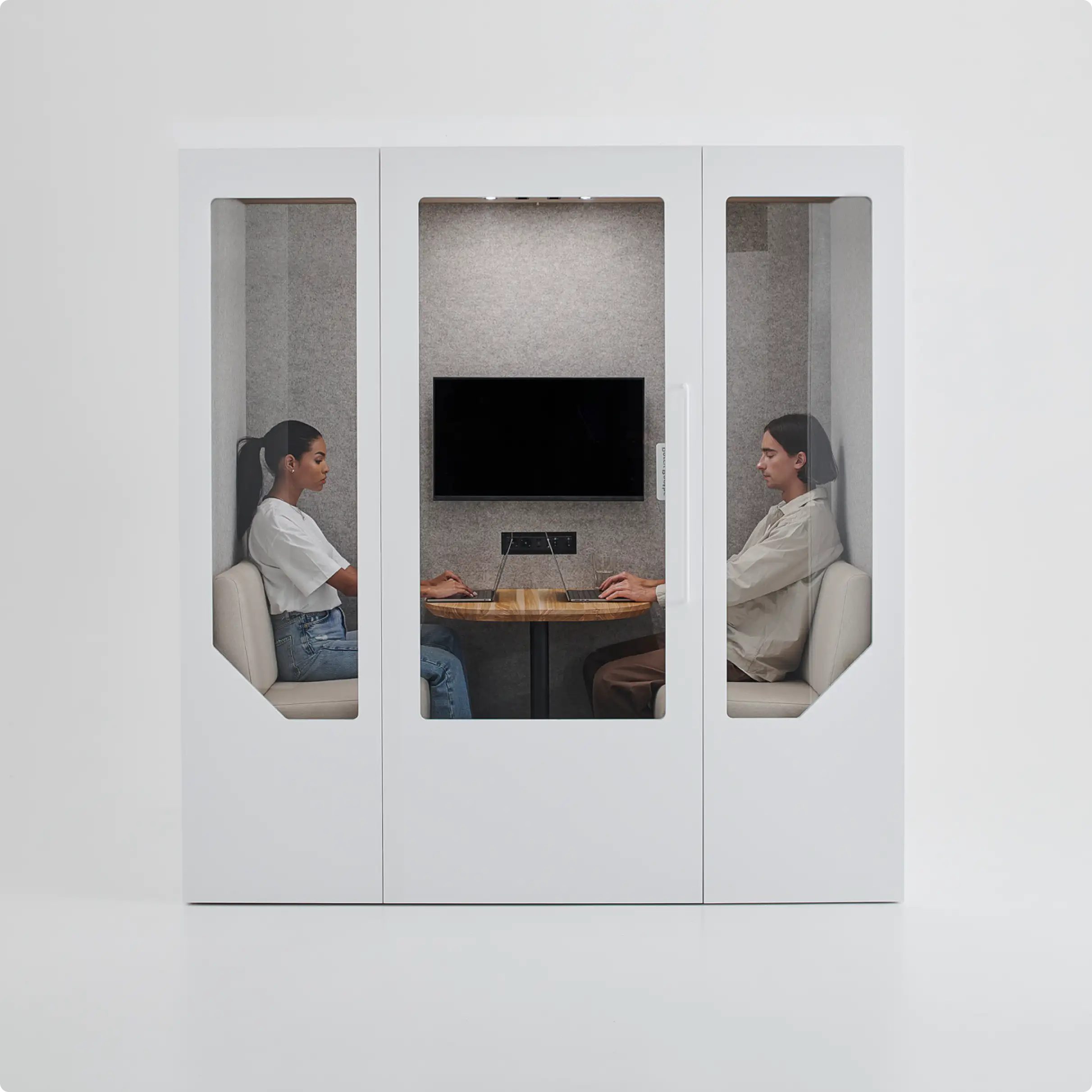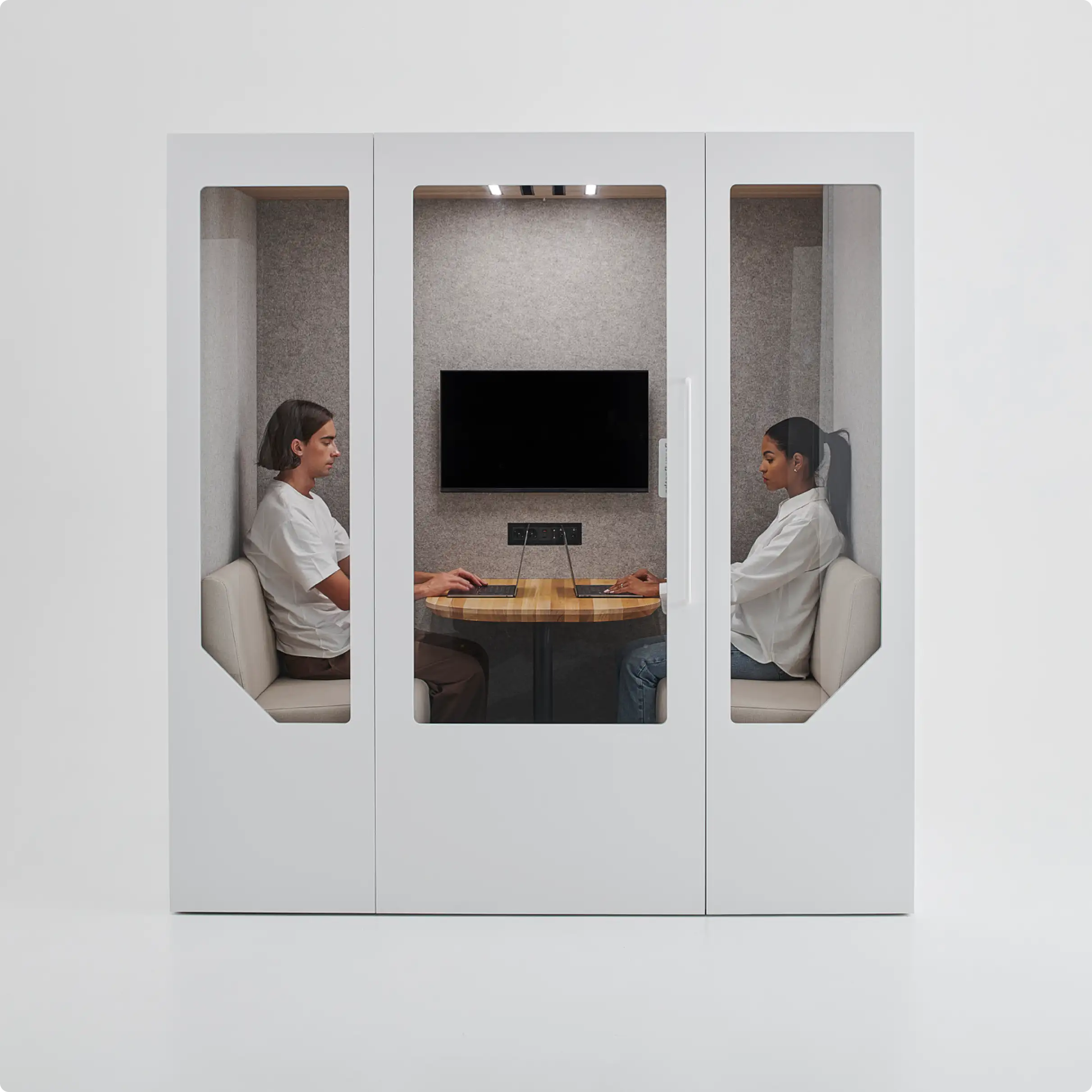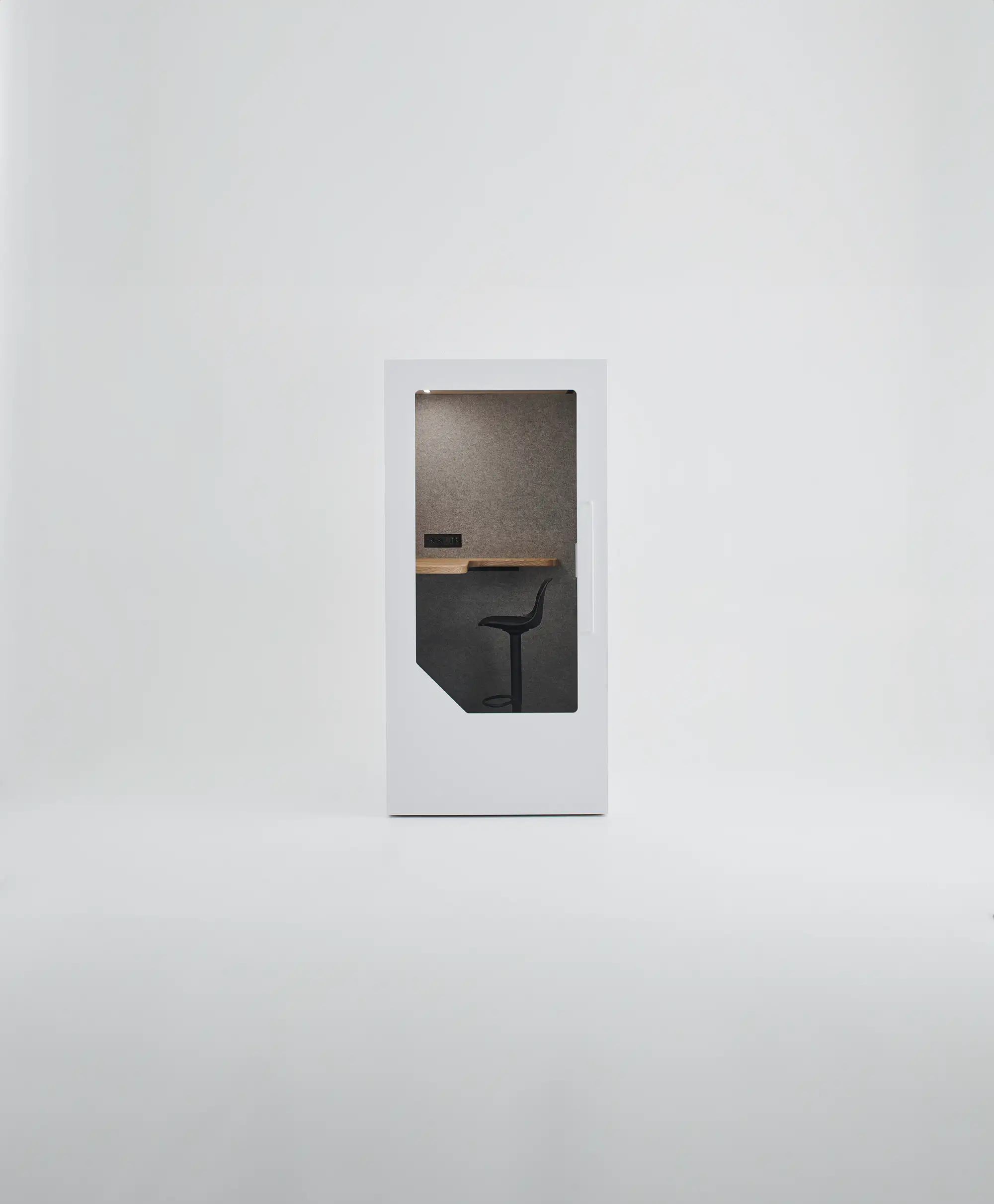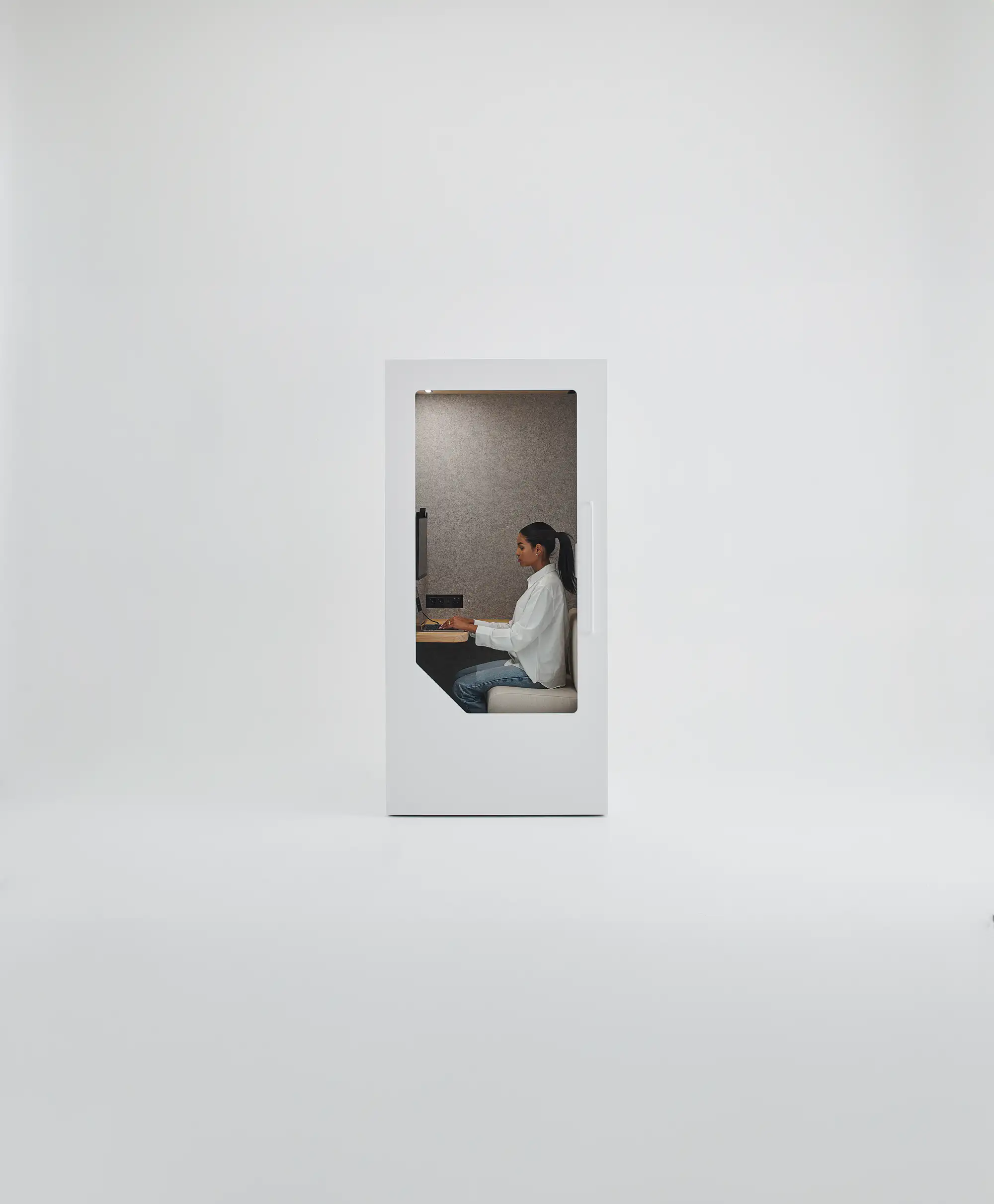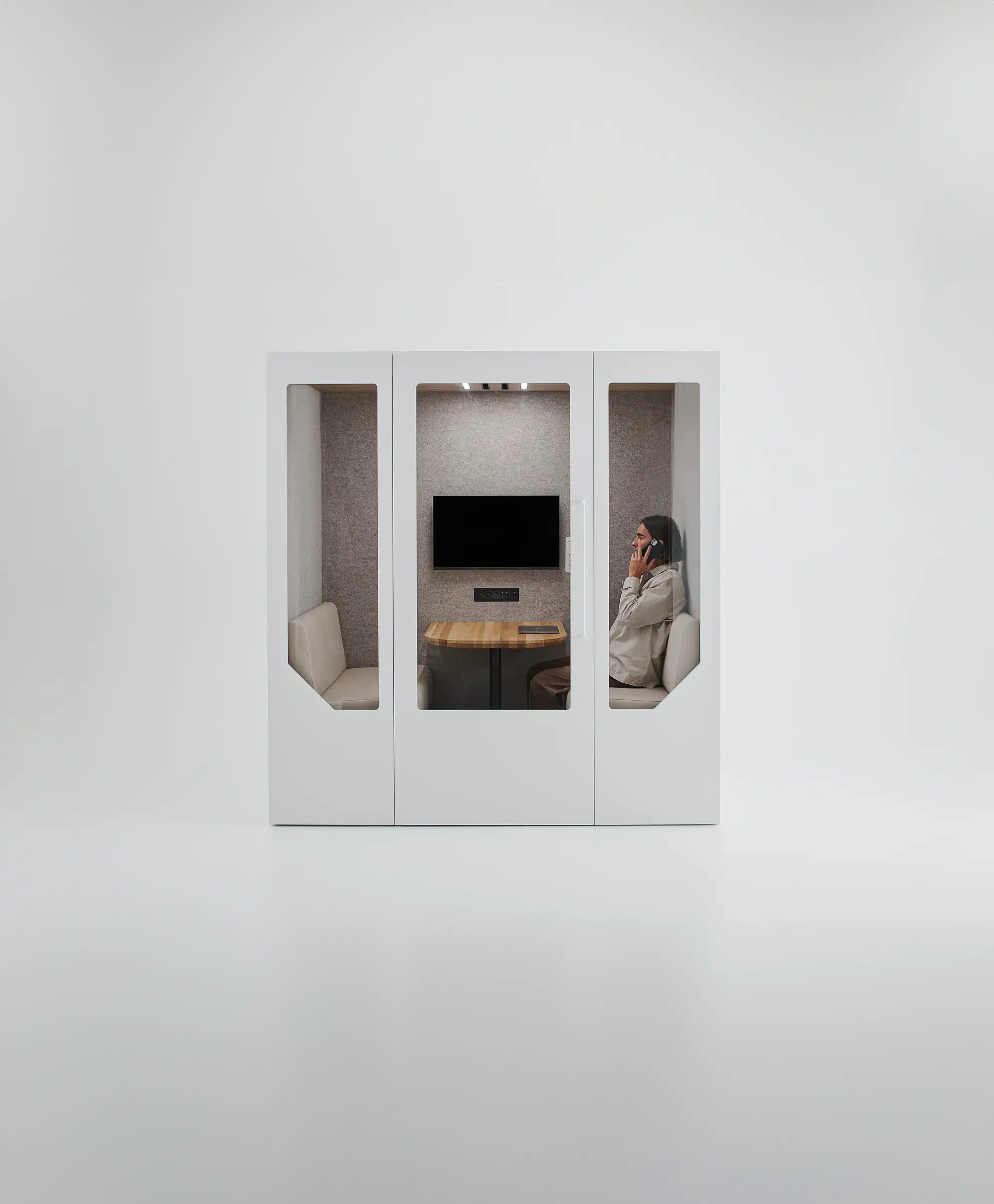

What are some booth red flags to watch out for?
Is ISO Certification important?
Why does the working desk size and placement matter?
Should I visit a showroom to test the booth in person?
Is the booth well ventilated?
Is the booth well ventilated?
Everything you need
to know before buying an office booth
You’re about to purchase an office booth your team will use for years. While it’s an exciting project, there’s a lot to consider. With tens, if not hundreds, of manufacturers worldwide offering some kind of office pod, it can be hard to understand which booth is right for you. Good news, though – we did all the research for you!
Checklist
Things to watch out for when choosing a call booth
Soundproofing
Practical Comfort
Low Weight
A booth’s weight could be another red flag to consider. Booths manufactured from lower-quality materials often weigh 200-240 kg. To enjoy a truly acoustic environment, you’d be looking into products over 300kg.
Thin Walls
Products with a wall thickness of 7 cm or less will have a harder time blocking sounds effectively. Look for products with a wall thickness of 8-10 cm, as usually it’s a good indication of how soundproof the booth will be.
Plexi or single-layer glass
Booths using single-layer glass or, worse, plexiglass (a plastic alternative) doors, don't stop sounds from entering/leaving the booths. If you’re after a soundproof office pod, then you’re bound to be disappointed.
No seal around doors
Even small gaps can drastically reduce the soundproofing and ventilation quality. To enjoy an acoustic effect, look for booths that have a rubber seal and multiple magnets around the perimeter of the door.
No sound traps
Cheaper products often have direct ventilation channels with no soundproofing materials, meaning the air comes in and out of the booth directly from the office – and so does the sound. Truly soundproof office pods will have acoustic air vents, not holes in the floor.
Not sharing ISO certification
The ISO certification is the closest thing to a universal soundproofing standard. When comparing booths, always ask for an official ISO (23351-1:2020) certification to make the right call. And be cautious of manufacturers that don’t want to share it or promise >30dB reduction. The advertised soundproofing level might not match the official testing results or might be based on cherry-picked data.
Desk on the back wall
A great booth should offer a snug, private space for getting important stuff done – with no one looking over your shoulder and into your screen, right? That’s why desk placement is a core requirement for a privacy booth. Avoid booths with desks mounted on the back wall as they leave users feeling exposed and uncomfortable.
No wheels on the booth
The workplace is constantly evolving: upsizing, downsizing, or relocating – flexibility is essential. Booths without wheels are anything but flexible. Reassembling them just to move across the room is time-consuming, costly, and frustrating. Opt for booths with integrated wheels for a smarter, long-term solution!
Hard-to-reach sockets
Neglecting connectivity results in a poor experience. Booth users frequently need to charge devices, so socket placement matters. While most manufacturers place sockets above the desk, some cut corners by hiding them under the table (leaving cables at your feet) or even on the roof!
Small, impractical tables
Mini desks are great for saving space, but not so much for working comfortably. Booths fitted with tables so small they barely fit a laptop make longer stays tiring. Opt for roomier desks that can hold multiple working essentials, such as a laptop, mouse, drink and notebook.
Features
How we design our
booths at Persy
Find out more about the design and engineering decisions we took to build the booth that’s actually soundproof, well-ventilated, is a delight to use and doesn’t cost a fortune.

Our Products
